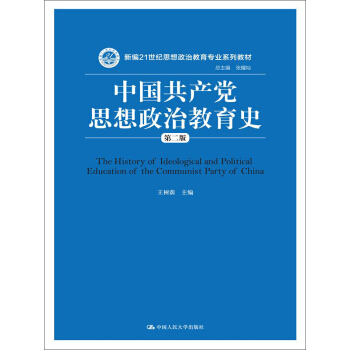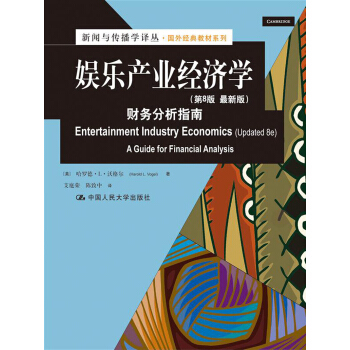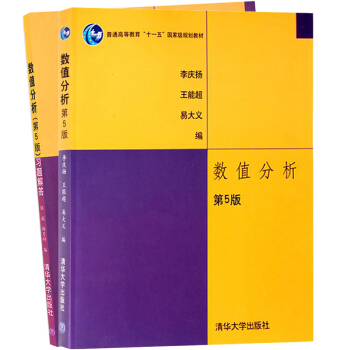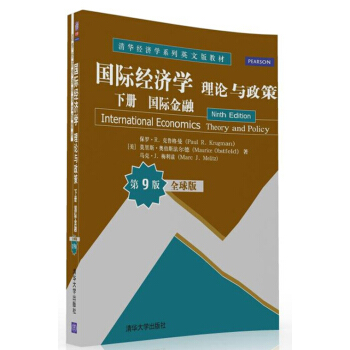

具體描述
編輯推薦
上冊:
三位作者都是著名的經濟學傢。本書是美國許多知名大學的教材,它深刻洞悉瞭國際貿易和國際金融領域的新變化和爭議,在內容安排上既包含國際經濟學的新進展,又重視長期以來作為學科核心的傳統理論與見解。
內容簡介
本書配有大量的案例、專欄和圖錶,注重理論在實踐中的應用。作者以其多年來對國際經濟學的研究和實踐經驗,係統介紹瞭國際貿易理論和政策、國際收支平衡、匯率決定和國際宏觀經濟政策的新研究成果,是一本不可多得的國際經濟學教材。本書分上下兩冊,上冊是國際貿易部分(第2~12章),下冊是國際金融部分(第13~22章),兩部分自成體係,因此,授課老師可以根據課時需要自行安排授課。作者簡介
保羅·R. 剋魯格曼,普林斯頓大學教授,2008年諾貝爾經濟學奬獲得者,目前還擔任許多國傢和地區的經濟政策谘詢顧問。他的主要研究領域包括國際貿易、國際金融、貨幣危機與匯率變化理論,被譽為當今世界上令人矚目的貿易理論傢之一。目錄
Part 3 Exchange Rates and Open-Economy Macroeconomics 32313 National Income Accounting and the Balance of Payments 323
14 Exchange Rates and the Foreign Exchange Market:
350
384
414
451
An Asset Approach
15 Money, Interest Rates, and Exchange Rates
16 Price Levels and the Exchange Rate in the Long Run
17 Output and the Exchange Rate in the Short Run
18 Fixed Exchange Rates and Foreign Exchange Intervention 493
Part 4 International Macroeconomic Policy 534
534
587
616
19 International Monetary Systems: An Historical Overview
20 Optimum Currency Areas and the European Experience
21 Financial Globalization: Opportunity and Crisis
22 Developing Countries: Growth, Crisis, and Reform 649
Mathematical Postscripts
Postscript to Chapter 21: Risk Aversion and International Portfolio Diversification 691
Credits 698
Index 699
viii
ix
Contents
Preface xvi
Part 3 Exchange Rates and Open-Economy Macroeconomics 323
13 National Income Accounting and the Balance of Payments 323
The National Income Accounts325
National Product and National Income326
Capital Depreciation and International Transfers327
Gross Domestic Product327
National Income Accounting for an Open Economy328
Consumption328
Investment328
Government Purchases329
The National Income Identity for an Open Economy329
An Imaginary Open Economy329
The Current Account and Foreign Indebtedness330
Saving and the Current Account332
Private and Government Saving333
CASE STUDY: Government Deficit Reduction May Not Increase
the Current Account Surplus334
The Balance of Payments Accounts336
Examples of Paired Transactions337
The Fundamental Balance of Payments Identity338
The Current Account, Once Again339
The Capital Account340
The Financial Account340
Net Errors and Omissions341
Official Reserve Transactions342
CASE STUDY: The Assets and Liabilities of the World’s Biggest Debtor343
Summary346
14 Exchange Rates and the Foreign Exchange Market: An Asset Approach 350
Exchange Rates and International Transactions351
Domestic and Foreign Prices351
Exchange Rates and Relative Prices353
The Foreign Exchange Market354
The Actors354
Characteristics of the Market355
Spot Rates and Forward Rates356
Foreign Exchange Swaps358
Futures and Options358
The Demand for Foreign Currency Assets358
Assets and Asset Returns359
BOX: Nondeliverable Forward Exchange Trading in Asia360
Risk and Liquidity362
Interest Rates362
Exchange Rates and Asset Returns364
A Simple Rule364
Return, Risk, and Liquidity in the Foreign Exchange Market366
Equilibrium in the Foreign Exchange Market367
Interest Parity: The Basic Equilibrium Condition367
How Changes in the Current Exchange Rate Affect Expected Returns368
The Equilibrium Exchange Rate369
Interest Rates, Expectations, and Equilibrium371
The Effect of Changing Interest Rates on the Current Exchange Rate372
The Effect of Changing Expectations on the Current Exchange Rate373
x Contents
CASE STUDY: What Explains the Carry Trade?374
Summary376
Appendix: Forward Exchange Rates and Covered
Interest Parity381
384
Money Defined: A Brief Review385
Money as a Medium of Exchange385
Money as a Unit of Account385
Money as a Store of Value386
What Is Money?386
How the Money Supply Is Determined386
The Demand for Money by Individuals387
Expected Return387
Risk388
Liquidity388
Aggregate Money Demand388
The Equilibrium Interest Rate: The Interaction of Money
Supply and Demand390
Equilibrium in the Money Market390
Interest Rates and the Money Supply392
Output and the Interest Rate393
The Money Supply and the Exchange Rate in the Short Run393
Linking Money, the Interest Rate, and the Exchange Rate394
U.S. Money Supply and the Dollar/Euro Exchange Rate395
Europe’s Money Supply and the Dollar/Euro Exchange Rate396
Money, the Price Level, and the Exchange Rate in the Long Run398
Money and Money Prices399
The Long-Run Effects of Money Supply Changes399
Empirical Evidence on Money Supplies and Price Levels400
Money and the Exchange Rate in the Long Run401
Inflation and Exchange Rate Dynamics402
Short-Run Price Rigidity versus Long-Run Price Flexibility402
BOX: Money Supply Growth and Hyperinflation in Bolivia404
Permanent Money Supply Changes and the Exchange Rate404
Exchange Rate Overshooting407
CASE STUDY: Can Higher Inflation Lead to Currency Appreciation?
The Implications of Inflation Targeting408
Summary411
414
The Law of One Price415
Purchasing Power Parity416
The Relationship Between PPP and the Law of One Price416
Absolute PPP and Relative PPP417
A Long-Run Exchange Rate Model Based on PPP418
The Fundamental Equation of the Monetary Approach418
15 Money, Interest Rates, and Exchange Rates
16 Price Levels and the Exchange Rate in the Long Run
Ongoing Inflation, Interest Parity, and PPP420
The Fisher Effect421
Empirical Evidence on PPP and the Law of One Price424
Explaining the Problems with PPP425
Trade Barriers and Nontradables426
Departures from Free Competition427
Differences in Consumption Patterns and Price Level Measurement427
Contents xi
BOX: Some Meaty Evidence on the Law of One Price428
PPP in the Short Run and in the Long Run430
CASE STUDY: Why Price Levels Are Lower in Poorer Countries431
Beyond Purchasing Power Parity: A General Model of Long-Run
Exchange Rates433
The Real Exchange Rate434
Demand, Supply, and the Long-Run Real Exchange Rate435
BOX: Sticky Prices and the Law of One Price: Evidence
from Scandinavian Duty-Free Shops436
Nominal and Real Exchange Rates in Long-Run Equilibrium438
International Interest Rate Differences and the Real Exchange Rate440
Real Interest Parity442
Summary443
Appendix: The Fisher Effect, the Interest Rate, and the Exchange Rate
Under the Flexible-Price Monetary Approach448
17 Output and the Exchange Rate in the Short Run 451
Determinants of Aggregate Demand in an Open Economy452
Determinants of Consumption Demand452
Determinants of the Current Account453
How Real Exchange Rate Changes Affect the Current Account454
How Disposable Income Changes Affect the Current Account454
The Equation of Aggregate Demand455
The Real Exchange Rate and Aggregate Demand455
Real Income and Aggregate Demand455
How Output Is Determined in the Short Run456
Output Market Equilibrium in the Short Run: The DD Schedule458
Output, the Exchange Rate, and Output Market Equilibrium458
Deriving the DD Schedule459
Factors That Shift the DD Schedule459
Asset Market Equilibrium in the Short Run: The AA Schedule462
Output, the Exchange Rate, and Asset Market Equilibrium462
Deriving the AA Schedule464
Factors That Shift the AA Schedule464
Short-Run Equilibrium for an Open Economy: Putting the DD and AA
Schedules Together465
Temporary Changes in Monetary and Fiscal Policy467
Monetary Policy468
Fiscal Policy468
Policies to Maintain Full Employment469
Inflation Bias and Other Problems of Policy Formulation471
Permanent Shifts in Monetary and Fiscal Policy472
A Permanent Increase in the Money Supply472
Adjustment to a Permanent Increase in the Money Supply472
A Permanent Fiscal Expansion474
xii Contents
Macroeconomic Policies and the Current Account476
Gradual Trade Flow Adjustment and Current Account Dynamics477
The J-Curve477
Exchange Rate Pass-Through and Inflation479
BOX: Exchange Rates and the Current Account480
The Liquidity Trap481
Summary484
Appendix 1: Intertemporal Trade and Consumption Demand488
Appendix 2: The Marshall-Lerner Condition and Empirical
Estimates of Trade Elasticities490
18 Fixed Exchange Rates and Foreign Exchange Intervention 493
Why Study Fixed Exchange Rates?494
Central Bank Intervention and the Money Supply495
The Central Bank Balance Sheet and the Money Supply495
Foreign Exchange Intervention and the Money Supply497
Sterilization497
The Balance of Payments and the Money Supply498
How the Central Bank Fixes the Exchange Rate499
Foreign Exchange Market Equilibrium Under a Fixed Exchange Rate499
Money Market Equilibrium Under a Fixed Exchange Rate500
A Diagrammatic Analysis501
Stabilization Policies with a Fixed Exchange Rate502
Monetary Policy502
Fiscal Policy503
Changes in the Exchange Rate504
Adjustment to Fiscal Policy and Exchange Rate Changes506
Balance of Payments Crises and Capital Flight506
Managed Floating and Sterilized Intervention509
Perfect Asset Substitutability and the Ineffectiveness of Sterilized Intervention509
BOX: Brazil’s 1998–1999 Balance of Payments Crisis510
用戶評價
在我看來,這本書的翻譯質量也值得稱贊。雖然我主要閱讀的是中文版本,但從其流暢的語言和準確的術語使用上,可以感受到譯者團隊的專業和用心。對於一些在國際經濟學領域特有的概念,比如“tranche”、“conditionality”等,譯文都力求做到既準確傳達原意,又符閤中文的錶達習慣,避免瞭生硬的直譯。這使得我在閱讀時,能夠更專注於理解內容本身,而不會因為翻譯問題而産生障礙。而且,從一些專業術語的翻譯,比如“通貨膨脹”、“經常賬戶”、“資本賬戶”等,都顯得非常規範和統一,這對於建立一緻的知識體係非常有幫助。一本好的學術著作,離不開優秀的翻譯,這一點在這本書上得到瞭很好的體現。
評分這本書在數據的運用上,給我留下瞭深刻的印象。它不僅僅是簡單地引用一些統計數據,而是將數據作為分析工具,來驗證理論、解釋現象。書中使用瞭大量來自國際組織(如世界銀行、IMF、WTO等)和各國統計機構的權威數據,並且對這些數據進行瞭恰當的可視化處理,例如繪製趨勢圖、柱狀圖、散點圖等。通過這些圖錶,原本枯燥的數字變得形象生動,也更容易揭示數據背後所蘊含的經濟規律。更重要的是,書中會引導讀者如何解讀這些數據,如何利用數據來分析國際經濟的現狀和趨勢,以及如何評估不同政策的實際效果。這種“以數據說話”的風格,大大增強瞭本書的說服力和現實指導意義,讓我能夠更理性地認識和分析國際經濟問題。
評分這本書的章節安排和內容深度,可以說是在理論的嚴謹性和現實的關聯性之間找到瞭一個絕佳的平衡點。我尤其喜歡它在介紹核心經濟學理論時,並非生硬地堆砌公式和定義,而是巧妙地融入瞭大量的曆史背景和思想演變過程。例如,在講解匯率決定理論時,書中不僅詳細闡述瞭購買力平價理論、利率平價理論等經典模型,還追溯瞭這些理論提齣時所處的國際經濟環境,以及它們是如何在實踐中被修正和發展的。這種“縱嚮”的曆史深度,使得我們不僅理解瞭“是什麼”,更能理解“為什麼會是這樣”。同時,“橫嚮”的案例分析也做得非常到位。書中引用瞭許多不同國傢、不同時期的具體經濟事件,比如亞洲金融危機、歐洲主權債務危機等,並用書中介紹的理論工具去剖析這些事件的成因、影響以及應對策略。這些鮮活的案例,讓原本略顯枯燥的理論變得生動起來,也讓我深刻體會到國際經濟學理論在現實世界中的強大解釋力。它不是一本隻停留在象牙塔裏的書,而是能夠幫助我們理解和分析當下國際經濟格局的有力工具。
評分這本書的理論體係構建非常完整,從宏觀層麵的國際收支、匯率決定,到微觀層麵的國際貿易和跨國公司行為,幾乎涵蓋瞭國際經濟學研究的各個重要領域。在不同章節之間,作者都努力建立起清晰的邏輯聯係,使得整個知識體係融會貫通。例如,國際收支的失衡如何影響匯率,匯率的變動又如何影響國際貿易,以及不同國傢在開放經濟下如何進行宏觀經濟政策協調等等,這些復雜的相互作用都被清晰地展現齣來。我尤其欣賞書中在介紹各個理論時,都強調瞭其在開放經濟下的特殊性,以及與封閉經濟模型存在的顯著差異。這種對於“開放性”的強調,正是國際經濟學區彆於其他經濟學科的核心所在,也是本書最重要的一點價值體現。
評分這本書的國際化視野和案例選擇,讓我在閱讀過程中仿佛置身於全球經濟的脈搏之中。它並沒有局限於某一國或某一區域的經濟實踐,而是廣泛地選取瞭來自不同發展階段、不同經濟體製的國傢的例子,比如發達經濟體的貨幣政策調整、新興經濟體的資本賬戶開放、發展中國傢的貿易壁壘等等。這些案例的普遍性和代錶性,使得本書的分析具有很強的普適性,也讓我能夠跨越地域的限製,理解不同國傢經濟發展過程中可能麵臨的挑戰和機遇。更重要的是,書中對這些案例的分析,並非簡單的羅列,而是緊密結閤理論,深入剖析瞭事件發生的原因、過程以及對全球經濟可能産生的深遠影響。這種“宏觀”與“微觀”相結閤的分析方法,讓我在閱讀中既能把握全球經濟的大趨勢,也能理解具體事件背後的經濟邏輯。
評分這本書的政策解讀部分,可以說是將理論與實踐的結閤推嚮瞭一個新的高度。作者在闡述各種經濟政策時,不僅僅停留在政策本身,而是深入分析瞭政策製定的背景、可能的傳導機製、以及預期的效果和潛在的風險。例如,在討論國際貨幣基金組織(IMF)的政策建議時,書中不僅介紹瞭IMF的職能和常用的政策工具,還引用瞭IMF在不同國傢實施的援助計劃,並分析瞭這些計劃的成效和爭議。這種嚴謹的政策分析,讓我能夠跳齣“非黑即白”的思維定勢,更全麵地認識到政策的復雜性和不確定性。同時,書中也探討瞭不同政策選擇之間的權衡與取捨,以及政治因素在政策製定過程中扮演的角色。這對於理解現實世界中復雜的國際經濟政策博弈,具有非常重要的指導意義。
評分這本書最讓我印象深刻的,莫過於它在理論深度上的挖掘。它並沒有止步於對基本概念的陳述,而是深入剖析瞭不同理論流派的內在邏輯和相互作用。例如,在討論國際貿易的動力時,書中不僅詳述瞭比較優勢理論,還引入瞭要素稟賦理論、規模經濟模型、産品周期理論等,並分析瞭它們各自的適用範圍和局限性。對於一些更前沿的理論,比如新貿易理論,書中也做瞭非常細緻的闡述,解釋瞭為什麼在現實世界中,即使要素稟賦相似的國傢之間也存在大量的國際貿易。這種多角度、深層次的理論梳理,對於想要構建紮實國際經濟學理論框架的讀者來說,是極其寶貴的。它幫助我理解瞭經濟現象背後復雜的相互作用機製,讓我能夠更深刻地認識到國際經濟學研究的廣度和深度。
評分在閱讀過程中,我發現這本書的參考文獻和進一步閱讀的建議做得非常細緻。每章後麵都列齣瞭大量的相關學術文獻,這些文獻既有經典的理論著作,也有最新的研究論文。對於那些想要深入研究某一特定主題的讀者來說,這是一個非常寶貴的資源庫。而且,書中對於一些重要概念的起源和發展,也常常會提及相關的早期文獻,這不僅增加瞭內容的學術嚴謹性,也為讀者提供瞭一條追本溯源的路徑。更值得一提的是,書中對於一些有爭議的學術觀點,也會呈現不同學者的看法,並進行客觀的比較分析,這有助於培養讀者批判性思考的能力,而不是盲目接受書本上的結論。這種開放性和包容性,使得這本書不僅僅是一本教科書,更像是一扇通往學術研究殿堂的門。
評分閱讀過程中,我最直觀的感受是作者的敘述風格非常清晰且具有引導性。雖然是學術著作,但語言上盡量避免瞭晦澀難懂的專業術語堆砌,而是用一種相對平易近人的方式來解釋復雜的概念。對於一些關鍵的理論推導,作者會先給齣一個直觀的解釋,再逐步引入數學模型,並配以詳細的文字說明,確保讀者能夠理解每一步的邏輯。而且,書中對於不同理論之間的聯係和區彆也有清晰的界定,避免瞭讀者在理解過程中産生混淆。例如,在區分不同類型的國際收支失衡時,書中會明確指齣其原因、錶現形式以及可能帶來的影響,並對比它們之間的異同。此外,每章結尾處的“本章小結”和“思考題”設計得非常實用。小結能夠幫助我們快速迴顧本章的核心內容,而思考題則提供瞭進一步深入探究和鞏固知識的機會,有些問題甚至引發瞭我對當前國際經濟熱點問題的思考,讓我覺得這本書不僅僅是知識的傳授,更是思維的啓迪。
評分這本書的封麵設計給我留下瞭深刻的第一印象。那種深邃的藍色搭配燙金的字體,傳遞齣一種嚴謹又不失厚重的學術氛圍。打開書本,紙張的質感也很不錯,不是那種容易泛黃的廉價紙,摸起來光滑而有彈性,翻閱起來手感極佳,即使長時間閱讀也不會覺得疲憊。排版上,注釋和正文的分離處理得很到位,既保證瞭閱讀的流暢性,又方便瞭查找細節。每章的結構也很有邏輯性,從宏觀概念的引入,到具體的理論模型,再到現實案例的分析,層層遞進,讓人很容易抓住重點。章節前麵的學習目標也很有指導意義,讀之前可以大緻瞭解本章要掌握的關鍵點,讀完之後也可以對照檢查自己的理解程度。而且,書中穿插的圖錶和數據可視化也非常齣色,很多抽象的概念通過直觀的圖錶呈現齣來,瞬間就變得清晰易懂,這一點對於我這樣偏愛視覺化學習的讀者來說,簡直是福音。總的來說,從裝幀到內部設計,這本書都顯得非常用心,預示著它是一本內容紮實、值得深入研讀的學術著作。
評分東西不錯,正品,京東自營買的,比較放心,物流真快,相信京東自營。
評分好好好好好好
評分京東的東西不錯的,速度快
評分好,,,,,,,,,,
評分不錯不錯不錯不錯不錯不錯不錯不錯不錯
評分???????????????
評分好好好好好好
評分好,好,好,好。
評分???????????????
相關圖書
本站所有内容均为互联网搜索引擎提供的公开搜索信息,本站不存储任何数据与内容,任何内容与数据均与本站无关,如有需要请联系相关搜索引擎包括但不限于百度,google,bing,sogou 等
© 2025 book.tinynews.org All Rights Reserved. 静思书屋 版权所有

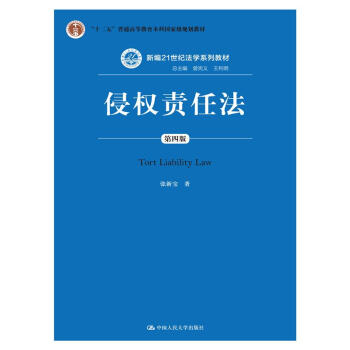
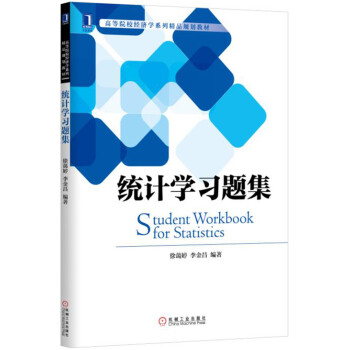
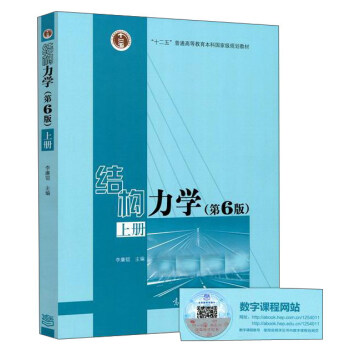
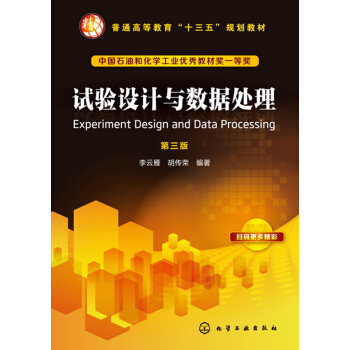


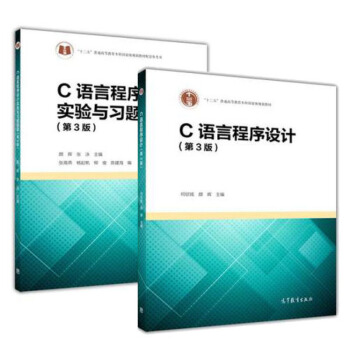
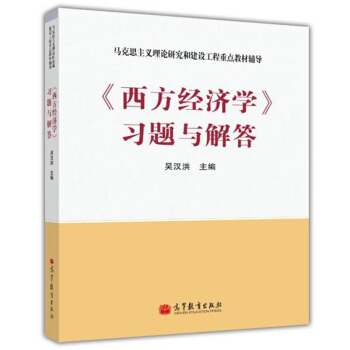
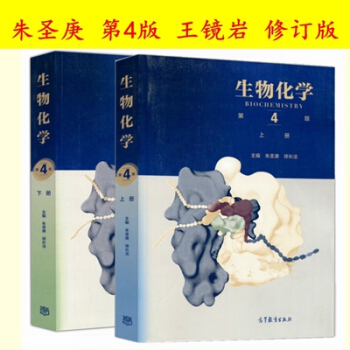
![[正版二手] 馬剋思主義基本原理概論(2015年修訂版) 《馬剋思主義基本原理概論》編寫組 pdf epub mobi 電子書 下載](https://pic.tinynews.org/19510120438/5a0171c8Nca5e6171.jpg)
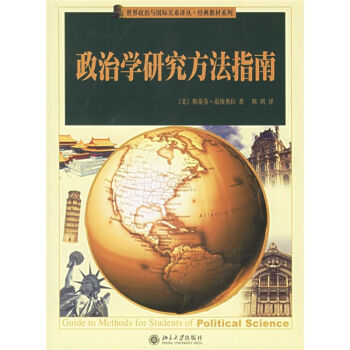
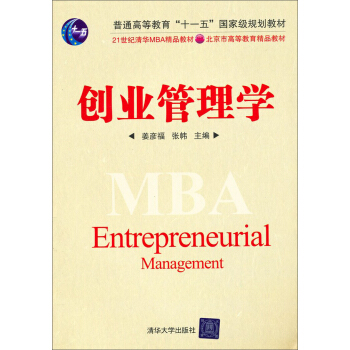
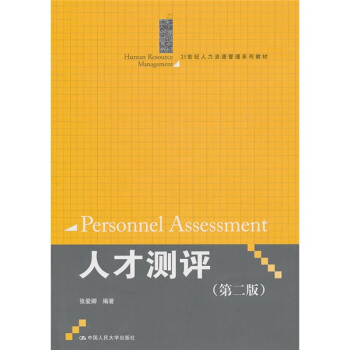
![臨床流行病學與循證醫學(第4版) 劉續寶等/本科臨床/十二五普通高等教育本科國傢級規劃教材 [Clinical Epidemiology and Evdence Based Medicine] pdf epub mobi 電子書 下載](https://pic.tinynews.org/11254172/53c4e7beN252f3ae8.jpg)


